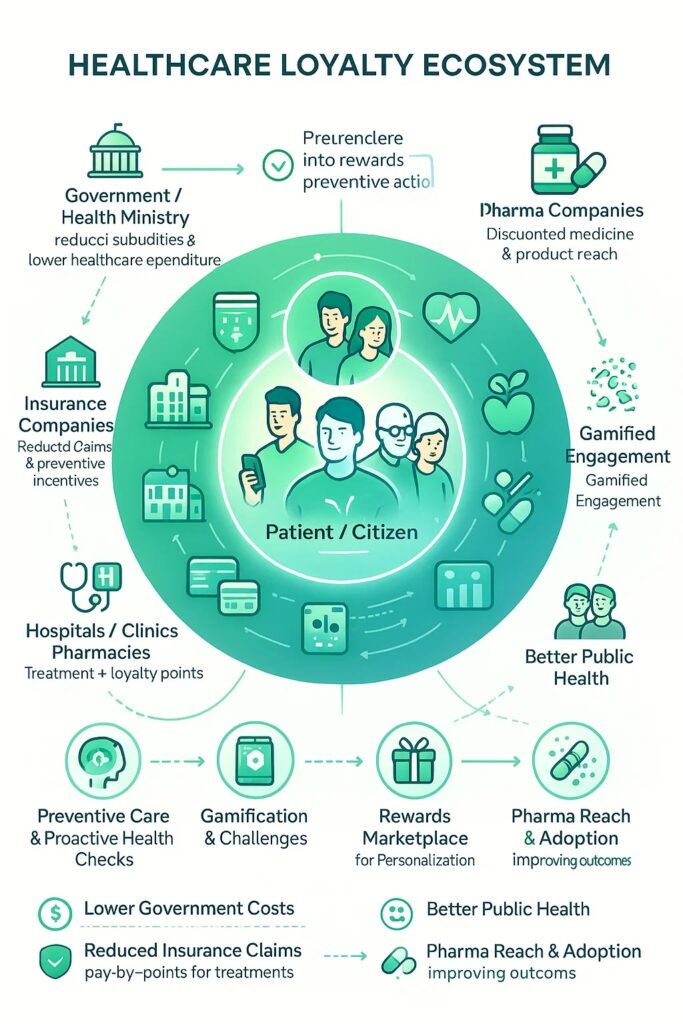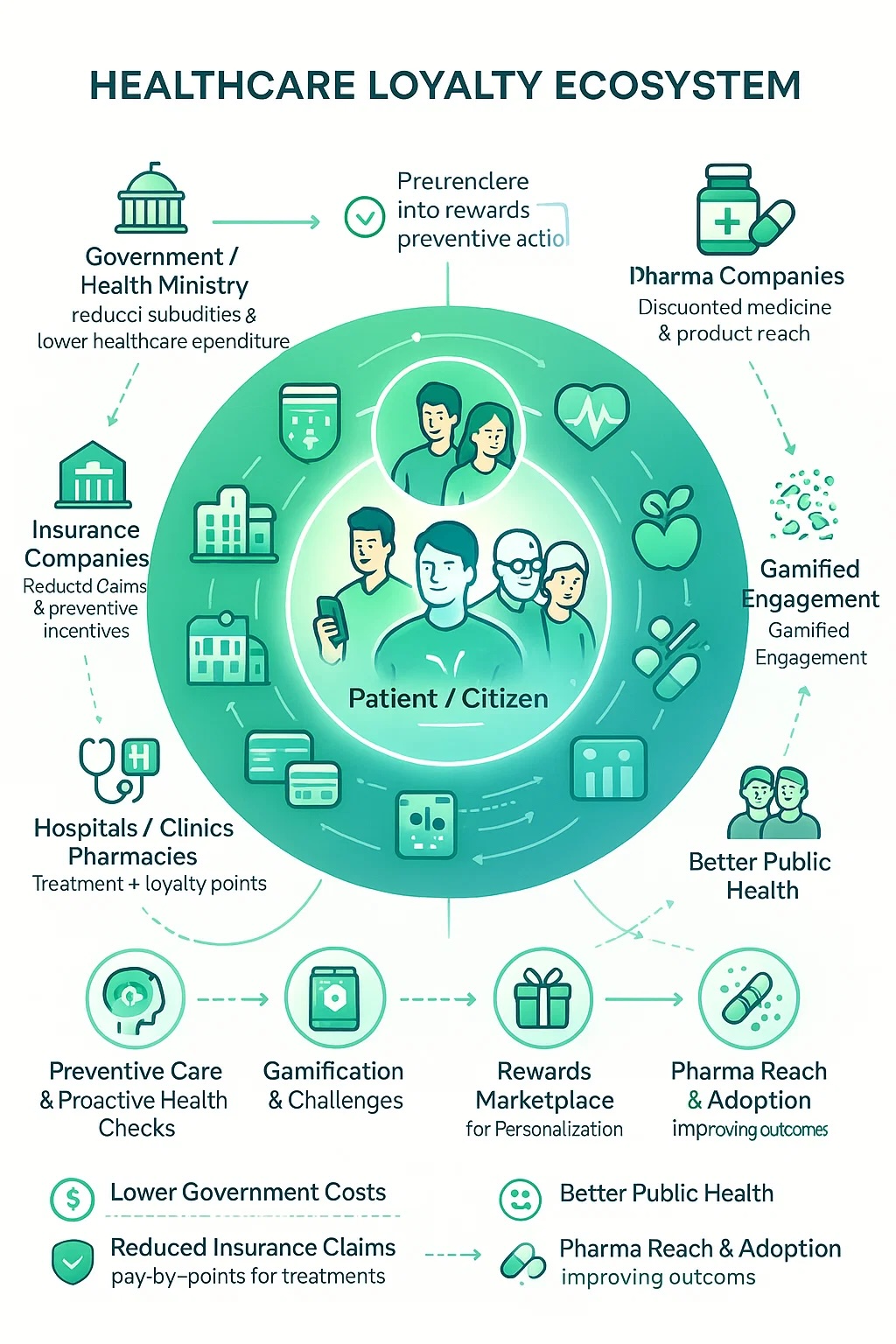
The Rising Challenge of Healthcare Costs
Globally, healthcare systems are under strain. Populations are living longer, chronic illnesses are more prevalent, and governments face growing pressure to keep healthcare affordable while maintaining high standards of care. Subsidies, insurance payouts, and public expenditure continue to rise year after year.
Taiwan, with its world-renowned National Health Insurance (NHI) system, is often celebrated as a model of efficiency and accessibility. Yet even here, the twin challenges of an aging population and increased demand for long-term care present a looming financial burden. The central question is simple: how do we ensure sustainability without compromising citizen well-being?
One answer lies in looking outside traditional healthcare models—borrowing a page from an industry that has spent decades perfecting engagement: loyalty programs.
Loyalty Beyond Retail
Loyalty programs are typically associated with airlines, supermarkets, and shopping malls. Customers earn points for purchases, redeem them for discounts, and engage in campaigns that drive repeat behavior. What if the same mechanics could be applied to healthcare, not for buying more, but for living better?
Instead of rewarding consumers for spending money, imagine a system that rewards citizens for preventive care: completing annual check-ups, attending wellness screenings, adhering to prescribed treatments, or even engaging in fitness challenges. The result is a healthcare loyalty ecosystem that drives proactive, healthy behaviors at scale.
The Healthcare Loyalty Ecosystem
At the center of this model is the citizen. Surrounding them are the key stakeholders:
- Government & Policy Makers: redirecting subsidies toward preventive incentives, lowering long-term costs.
- Insurance Companies: reducing claims by encouraging risk management and early detection.
- Pharma Companies: engaging citizens through affordable medicine bundles, discounts, and trial programs.
- Hospitals, Clinics, and Pharmacies: becoming partners in proactive health rather than only reactive care.
- Banks & Payment Providers: enabling installment options and pay-by-points for treatments and prescriptions.
Connecting them is a loyalty engine that orchestrates earn-and-burn mechanics, gamified challenges, rewards catalogues, and AI-powered personalization.
How It Works
- Earning Points Through Preventive Actions
- Annual health check-ups, screenings, vaccinations, and wellness programs all generate loyalty points.
- Fitness and lifestyle apps integrate to reward daily healthy habits—steps walked, sleep tracked, or nutrition logged.
- Redeeming Points for Value
- Citizens can redeem points at pharmacies for discounted medicines or supplements.
- Clinics and hospitals allow points to cover part of co-payments or elective services.
- A central rewards catalogue offers wellness products, healthy meal kits, or even fitness classes.
- Government Benefits
- By incentivizing preventive care, the government reduces long-term spending on late-stage treatments.
- Subsidies are used more efficiently—supporting citizens before illness escalates into high-cost interventions.
- Insurance Benefits
- Fewer claims are filed as more conditions are caught early.
- Insurers can offer lower premiums or bonus coverage tiers tied to healthy behaviors.
- Pharma Benefits
- Discounted pricing increases accessibility and volume without undermining margins.
- Engagement channels with patients expand, creating stronger brand loyalty.
- Citizen Benefits
- A gamified, engaging program makes healthcare feel rewarding rather than punitive.
- From Gen Z tracking fitness on wearables to elderly citizens encouraged into screenings, all demographics are included.
Gamification as a Public Health Driver
Traditional health campaigns often struggle with engagement. Posters, pamphlets, and public service announcements may raise awareness but rarely change long-term behavior. Gamification changes this dynamic.
Imagine national health challenges where citizens compete or collaborate for collective rewards. A city could run a “10,000 Steps Challenge” where participants earn both personal points and contribute to community-wide benefits. A family could unlock bonus points for completing annual dental or vision check-ups together.
Gamification taps into intrinsic motivators—competition, achievement, and recognition—while aligning them with extrinsic rewards like discounts and perks.
AI and Personalization
A critical part of making such a system effective is personalization. Not every citizen has the same needs, risks, or motivations. AI-driven insights can ensure the program is not “one-size-fits-all”:
- Seniors might receive prompts for screenings or chronic condition management.
- Young adults could be nudged toward fitness and nutrition challenges.
- Families could be encouraged to engage in multi-generational wellness plans.
Personalization not only improves effectiveness but also ensures citizens feel supported rather than managed.
Economic and Social Impact
The benefits of a healthcare loyalty ecosystem extend well beyond individual wellness.
- For governments, this model means controlling costs by shifting from treatment to prevention.
- For insurers, it offers a healthier risk pool and better profitability.
- For pharma, it enables more targeted engagement and steady demand.
- For citizens, it builds healthier, longer lives with greater access and affordability.
The broader societal impact is immense: a healthier, more productive population, reduced financial stress on families, and a healthcare system designed for sustainability.
Why Now?
The convergence of digital health tools, payment innovations, and AI-powered personalization makes this model achievable today in ways that were not possible a decade ago. Citizens already engage with loyalty in retail, airlines, and e-commerce. Extending the same principles into healthcare is not a leap—it’s a natural evolution.
For a country like Taiwan, with its strong digital infrastructure and a culture that values collective well-being, the opportunity to pilot such a model is significant. It could serve as a blueprint not only for Asia but for the world.
A Call to Action
Healthcare loyalty is not about gamifying sickness—it’s about rewarding wellness. It’s a chance to create an ecosystem where every stakeholder benefits and where citizens feel empowered to take charge of their health.
By rethinking loyalty, we can shift from a system that pays for treatment to one that rewards prevention. The impact could be nothing short of transformative—for governments, businesses, and, most importantly, the people.
